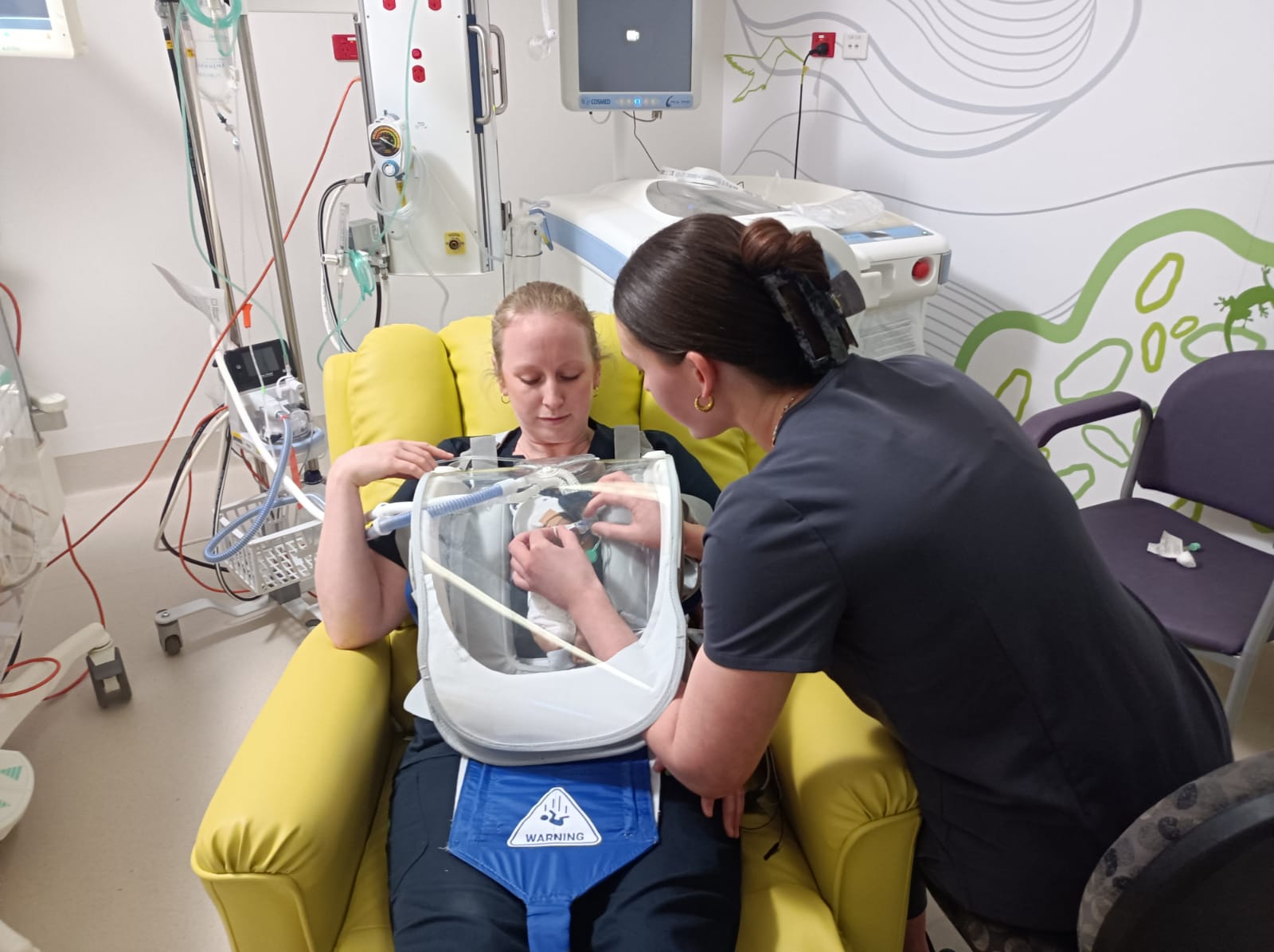Neonatal General 4: Novel Technology and Therapies
Session: Neonatal General 4: Novel Technology and Therapies
807 - Assessing perceived safety and convenience of use of the Skincubator 2.0 (a device for prolonged skin-to-skin-care for extreme preterm infants) in a manikin simulation in a tertiary NICU in Australia.
Friday, April 25, 2025
5:30pm - 7:45pm HST
Publication Number: 807.3667
Emma Yeomans, Monash Health, Melbourne, Victoria, Australia; Shannon C. Paton, Monash Health, Melbourne, Victoria, Australia; Elly M. Kuipers, Monash Children's Hospital, Clayton, Victoria, Australia; ARVIND SEHGAL, MONASH UNIVERSITY, MELBOURNE, Victoria, Australia; Calum T. Roberts, Monash University, Clayton, Victoria, Australia; Lindsay Zhou, Monash Children's Hospital, Melbourne, Victoria, Australia; Itamar Nitzan, Shaare Zedek Medical Center, Jerusalem, Yerushalayim, Israel
- IN
Itamar Nitzan, MD (he/him/his)
neonatologist
Shaare Zedek Medical Center
Jerusalem, Yerushalayim, Israel
Presenting Author(s)
Background: Skin-to-Skin-Care (SSC) reduces morbidity and mortality in preterm neonates. However, extreme preterm neonates are generally ineligible for early, prolonged SSC for several reasons, including the need for humidity, concerns of line dislodgment and the need for nurses to evaluate and treat the baby. To enable continuous SSC in this population we invented the Skincubator a novel, small incubator, designed to attach to the caregiver’s torso without any barrier between the parent chest and the baby (figure 1). The Skincubator creates a controlled warm humidified environment while enabling SSC for extended periods. We have previously demonstrated that the Skincubator improves thermoregulation during SSC. The Skincubator is also used to transfer the baby to SSC within his nest in warm humidified environment without exposure to ambient air and with secured tubes and lines.
Objective: To assess nurses perception of safety and baby handling while using the Skincubator.
Design/Methods: A structured simulation in which nurses were asked to transfer a manikin connected to common tubes and lines from an incubator to a volunteer and perform nursing cares inside the Skincubator. Following the simulation they rated in a Linkert scale of 1-5 (1 very unsatisfied, 5 very satisfied) each procedure for Skincubator SSC and traditional SSC (t-SSC). Procedures were rated separately for safety, baby handling and convenience for the nurse. Simulations were performed separately on a manikin with a CPAP and a Peripherally Inserted Central Line (PICC) resembling a 29 week preterm and an intubated manikin with an umbilical catheter resembling a 25 week preterm neonate at the second day of life.
Results: Twenty NICU nurses have performed each structured simulation. Nurses years of NICU experience were 10±6 years (mean±SD)
Nurses were very satisfied with the safety of a Skincubator transferring system for a manikin with CPAP and ETT (Likert scale 5 (5,5) and 5 (3.5,5,5) (median (25%,75%) and only satisfied and neutral with the safety of traditional SSC transfer for CPAP and ETT (Likert scale 4 (4,4.5) 3 (3,4) (p=0.001 and p=0.003) Wilcoxon Signed-Rank Test (WSRT). Nurses also perceived that the Skincubator reduces baby handling and is more convenient to the nurse than traditional SSC. Additional results are presented in table 1.
Conclusion(s): After performing structured manikin simulations, Nurses with extensive NICU experience perceive that Skincubator SSC may increase safety, reduce baby handling and enable more convenient nursing care as compared to traditional SSC. Nurses perception of safety may promote early continuous SSC.
Table 1
.png) Table 1. Likert scale rating of how much are the nurses satisfied with four procedures is four aspects: The ability to perform, safety, baby handling and nurse convenience. Data is presented as median (25,75 percentiles).
Table 1. Likert scale rating of how much are the nurses satisfied with four procedures is four aspects: The ability to perform, safety, baby handling and nurse convenience. Data is presented as median (25,75 percentiles). Figure 1
.jpg) A 29 week preterm baby on her father chest in skin to skin contact inside the Skincubator.
A 29 week preterm baby on her father chest in skin to skin contact inside the Skincubator. Figure 2
 Figure 2 Two NICU nurses during the structured manikin simulation.
Figure 2 Two NICU nurses during the structured manikin simulation.
